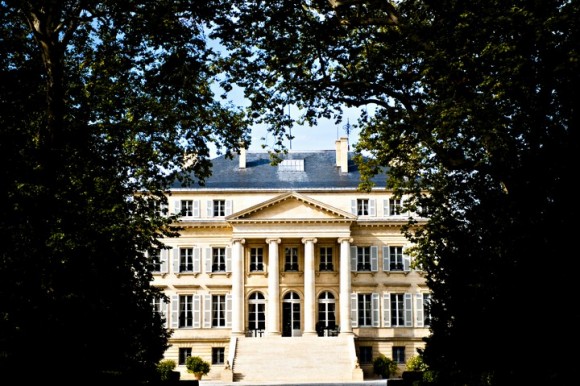The Wines of Margaux

What secrets lie behind the elegant wines of Margaux that make them some of the most sought-after in the world? Join us as we unveil the unique characteristics and rich history of this legendary Bordeaux region!
Discovering the wines of Margaux, the region, and its properties, could well be the highlight of your trip to Bordeaux. Margaux is the largest of the six regions of the Médoc, and the farthest south. The 1,479 lucky people who live there reside in one of the most famous wine-making regions on earth. The rest of us can profit from the legendary hospitality of the wine estates, which welcome visitors.
This low-lying region just north of Bordeaux was reclaimed by Dutch hydraulic engineers towards the end of the eighteenth century, just in time for wine cultivation to be expertly carried on before the 1855 Classification immortalized the regions of the Médoc. Leading grapes grown are Cabernet Sauvignon and Merlot, followed by Cabernet Franc, with traces of Malbec. The wines are on the lighter side, but fragrant and flavorful.
As to the vineyards, first, of course, Château Margaux comes to mind, the celebrated first growth of the Médoc. Since my farewell consular luncheon was held there, the wine and the elegant property are great personal favorites. The wine commands four figures per bottle now! But the Margaux story doesn’t end there. There is a second red wine, Pavillon Rouge, which has been made for over a century, as well as a companion Pavilion Blanc, both made by Château Margaux.
However, Château Margaux is not the only grand vin in this area. Margaux itself is a region of the Médoc, and twenty-one wines from the 1855 Classification are to be found there, nearly all with second wines as well. That is the largest number of wines included in that famous classification from any region of the Médoc – four more than in Pauillac, for example. Let’s take a look at some samples. Our family favorite is Growth Château Brane-Cantenac, a wine made by the esteemed Lurton family. It is flavorful and ages very well – we enjoyed our last bottle of the 1960 vintage fifty years after its bottling! I am also very fond of Château Durfort-Vivens, a second growth located just across the roadway from Margaux, and I think rather under-appreciated.
The elegant third-growth Château Palmer is just across the way from its illustrious neighbor Margaux. In some vintages, notably the landmark 1961, Palmer is thought to have the quality edge. That is reflected in its price. Palmer would certainly be upgraded if the famous classification were ever revised. Château d’Issan has a rich wine, and it is a pleasure in May to attend one of the Bordeaux concerts in the château. The fourth growth Château Prieuré-Lichine, no longer owned by the Lichine family, is a fine wine, for a property that was cobbled together from several plots in the region. For a fifth growth, I have been very pleased by Château Dauzac, which is now finally living up to its potential.
As you’ll have noted, the astute wine buyer can have a choice of quality wines at different price points. It isn’t Château Margaux or anything! You aren’t even limited to wines of the 1855 Classification, which together comprise just one-fourth of the wines produced in the Médoc. Here as elsewhere, there are cru bourgeois, such as the well regarded Château Siran, one of the nine cru bourgeois exceptionnels, and Château Paveil de Luze, one of the 87 crus bourgeois supérieurs. There are many more properties in Margaux – 74 in all!
There are quality wines at every price level, and you’ll enjoy tasting the fine wines of Margaux and making your discoveries there.

